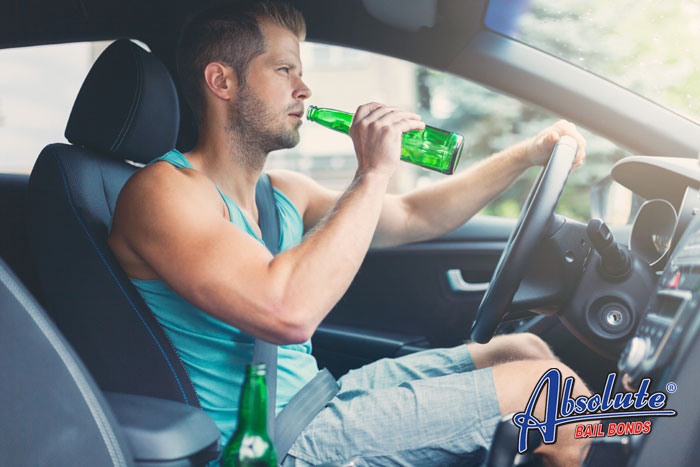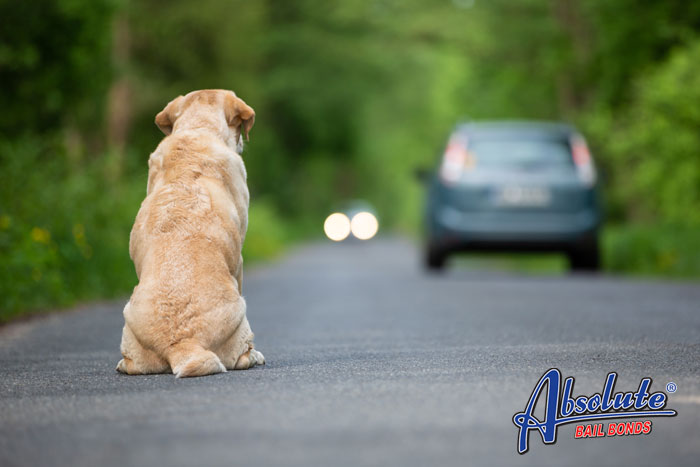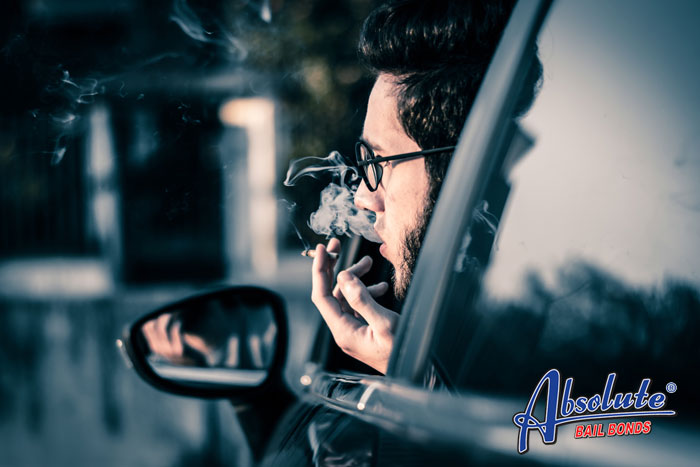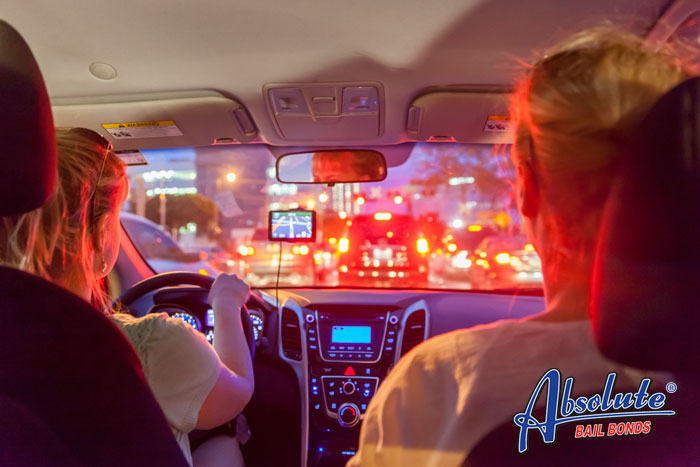
Understanding Battery in California
Assault charges can be confusing, mostly because the law has so many nuances and different stages of things. The simplest way to look at things is to understand that any assault and battery charge involves someone getting into an altercation with another person.
California’s Penal Code sections 240 and 242 deals with assault and battery. The law defines battery \ and battery as, “any willful and unlawful use of force or violence upon the person of another.”
Don’t assume that simply because the person that you allegedly assaulted wasn’t hurt that the charges will simply go away. The way the law is written, simply grabbing another person’s shirt without their consent can be grounds to file assault and battery charges against you.
Even though assault and battery charges often seem like the same thing. In California, you could potentially be charged with just assault or just battery. The reason for this is because California lawmakers consider assault as an attempt to use physical force to threaten/harm whereas battery happens when you carry through with the threat and genuinely harm the other person.
If convicted of misdemeanor battery, the maximum sentence you’d receive is misdemeanor probation, up to six months in jail, and a $1,000 fine.
If the battery case involves a police officer, a guilty conviction could result in twice as severe consequences.

Laws Every Californian Should Know About
If you call California home, there are a few laws you should familiarize yourself with.
DUI Threshold Laws
Everyone knows that getting arrested for DUI is a serious, life-altering problem. The problem is that few people know what when they have crossed over the threshold from legally able to drive and become too drunk to drive.
It doesn’t matter if you are the kind of person who gets buzzed after a few sips or someone who really can hold their liquor, if you’re pulled over and your blood alcohol level is 0.08% or higher you will be charged with a DUI.
Data Privacy Laws in California
One of the great things about calling California home is knowing that you have a legal right to know exactly what type of data businesses collect about you and what they’re using it for. The California Consumer Privacy Act went into effect on January 1, 2020.
The California Consumer Privacy Act is written in such a way that you:
- Can delete personal data a business has collected
- Block the sale of personal data
- Have the ability to learn exactly what data is collected/sold/shared/etc.
Comparative Negligence for Injuries
Don’t assume that just because you believe that someone is 99% for injuries they sustained during an accident, that they’ll be responsible for the bulk of their medical bills. That’s not quite how the law sees things in California.
California lawmakers created a comparative fault law that basically states that if you are in any way responsible for a person’s injuries, they (or their insurance company) can sue you for a portion of the expenses the individual incurred because of the accident. The good news is that once the court decides how much your actions contributed to the accident, that will be the amount you have to owe.
For example, if a guest comes to your home while they are drunk and trips over a hose that you left stretched across the driveway and breaks their nose, the court might decide that the hose was only 20% of the reason they were injured. The other 80% of the injuries were connected to their intoxication. In this situation, you’d only be responsible for 20% of the medical bills.
Cell Phones and Cars
As a society, we’ve become addicted to our cell phones. They rarely leave our sight. We love how they provide us with a way to constantly be connected to everyone we care about. While no one has taken steps to separate us from our phones, California lawmakers have passed laws that are designed to keep you off your phone while you’re behind the wheel.
If you’re under 18 and driving, you’re not allowed to use your cell phone at all while commuting. Even the hands-free system is off-limits. If you do have to make a call or respond to a text, you’ll have to pull over and deal with the situation while your car is completely stopped.
If you’re over 18, you’re allowed to use the hands-free system of your choice, but you can’t have your phone in your hand. The first time you’re caught holding the phone while driving, you’ll be issued a ticket that will cost at least $76.
The one exception to using a handheld phone while driving is if you’re reporting an emergency to the police or fire department.

You’ve Been Arrested for DUI… Again
Getting arrested and charged for DUI once in California is terrifying and life-altering. The second time you’re arrested for the same thing is even worse.
Like many states, California lawmakers have decided that to take a hard stance on drunk drivers. One of the ways they’ve done this is by creating laws that make a second (and each additional offense) significantly worse than the first. The reason for this is because while a single DUI could be the result of a bad judgment and an honest mistake, additional arrests indicate that you have a habit of driving while under the influence and a menace to society.
DUIs are addressed in California Vehicle Code Section 23152. The second time you’re convicted of a DUI in California, the result will include losing your ability to drive, fines, mandatory enrollment in substance abuse programs, and jail time.
When you’re convicted of a second DUI in California, you will be required to spend at least 96 hours in the county jail. That’s the minimum amount of jail time connected to a second DUI. The maximum amount of time you can serve is 12 months.
You should expect to pay a higher fine than you did for the first offense. Typically, the fine for a second DUI is between $390 and $1,000, but that might not be all you’ll have to pay. Most courts add penalty assessments to the DUI fine. These assessments can multiply the fine to five times the anticipated amount. In some situations, the judge will allow you to choose to extend the amount of time you serve in jail or do a great deal of community service in exchange for paying the fine.
Since January 1, 2019, a guilty conviction of a second DUI in California requires that the judge order an ignition interlock device be attached to your vehicle. This only happens if the two convictions are less than 10 years apart.
The second DUI means you’ll lose your driving privileges. The good news is that the loss of your license probably won’t be permanent. In California, the current license suspension for a second DUI is a 1-year suspension (administrative per se) or a 2-year suspension if you are convicted.
It’s worth noting that in some situations, the judge will grant you a restricted license. This doesn’t mean you’ll be allowed to drive wherever you want. By if you’re able to present a compelling case to the judge, they’ll allow you to drive to work and to manage things like transporting your children. If you’re caught driving to places that aren’t specified in the paperwork connected to your suspended license or you’re driving at a time when you’re not supposed to, the restricted driving privileges will be taken away.
The only way you’ll be granted a restricted license is if you didn’t refuse to take a blood or urine test when you were originally arrested for the second DUI.
In addition to dealing with the actual criminal consequences of a second DUI, if you damaged property or injured/killed someone while driving drunk, it’s likely you’ll also find yourself engaged in a civil case as well.
The best way to avoid all of these consequences is making sure you never get behind the wheel after you’ve been drinking or using drugs.

Oops, I Opened my Neighbor’s Mail!!
The postal service isn’t infallible. They’re prone to making human mistakes. One of the most common mistakes the postal service does is occasionally putting your neighbor’s mail in your mailbox.
Most of us don’t really look at the mail before we open it. Since it’s in our mailbox, we automatically assume it’s for us. As a result, occasionally we open a piece of mail that belongs to our neighbor.
This can instantly lead to a sense of panic because most of us know that opening other people’s mail is a federal offense.
If you’ve accidentally opened a piece of mail that isn’t yours, the first thing you need to do is take a deep breath and relax. Unfortunately, these things happen.
The best way to deal with the situation is to return the mail to the envelope, seal it with a piece of tape, and let your neighbor know what happened. If you don’t see your neighbor, either slide the mail under their front door with a note of explanation or return the mail to the post office.
You want to take a proactive stance on the situation. The quicker you are to admit to the mistake, the less likely your neighbor will be to press charges.
If you got as far as reading whatever was sent to your neighbor, you don’t want to discuss the contents with anyone. Not with your neighbor (unless they bring it up,) not your spouse, and not your friends. Talking about the mail you accidentally opened could be considered an invasion of privacy and may cause your neighbor to consider filing charges against you.
The issue of mail theft is dealt covered by PC 530.5(E). In California, opening someone’s mail is a misdemeanor offense. A guilty conviction could result in being sentenced to a single year in jail. The good news is that to secure a conviction, the prosecution has to prove that you knowingly accepted the mail (or took it out of someone’s mailbox) and opened it. That’s why it’s so important to admit what you’ve done and alert both the post office and the actual owner of the mail to the situation.

Felony Animal Cruelty in California
It’s a story that broke the hearts of animal lovers all over Los Angeles. Local newspapers have been covering the story about a kitten who was thrown out in the trash. The fact that the kitten was considered a piece of trash is bad enough, the fact that it was also severely injured makes the story even worse.
The small calico kitten was rescued from the trash in October. When it was examined, a local veterinarian discovered that not only was one of the kitten’s legs currently broken, there was also evidence that the other leg had been fractured earlier healed badly. Additional injuries included a dislocated hip, bruised lungs, missing teeth, and several bruises and cuts.
Sadly, this kitten’s story isn’t unusual. Every single year, California animal shelters to rescue and care for severely injured animals. What makes this case different is that police believe they’ve found the Lawndale man who is responsible for the kitten ending up in the trash. He’s been arrested and charged with felony animal cruelty.
In an interesting twist, the kitten provided the clue needed for the local police to arrest the man believed to be responsible for the kitten’s injuries. The most important lead in the case came from the kitten’s microchip.
While the Lawndale man was arrested, he didn’t stay in jail long before he was released on his own recognizance, meaning he didn’t have to pay any bail. He doesn’t have to appear in court until July 22 for his arraignment. Police records indicate that he’s been charged with two counts of felony animal cruelty and two misdemeanor counts of failure to properly care for an animal.
California lawmakers have taken a tough stance on animal cruelty. As a result, California has some of the strictest animal cruelty laws in the country. The issue of animal cruelty is covered in the California Penal Code Section 597. It states that anyone who knowingly tries to kill, injury, abandon, neglect, or even overwork an animal can be charged with animal cruelty. It’s important to note, that you don’t have to own the animal to face cruelty charges. The law is written in such a way that even individuals who are caught harming wildlife can be charged with felony animal cruelty.
If convicted of felony animal cruelty, the judge could sentence the Lawndale man to spend three years in prison and charge him a $20,000 fine. In addition, the judge could order the man to also cover the cost of the kitten’s expenses for the time the cat was in foster care and receiving medical attention.
If convicted of a misdemeanor for failure to care for an animal charges, the man could be required to pay a $1,000 fine and serve six months in jail.

Child Endangerment in California
California’s lawmakers believe that adults have a moral and legal responsibility to protect children. Failing to do so can put you on the wrong side of the law.
The California Penal Code 273a PC deals with the issue of child endangerment.
The interesting thing about Penal Code 273a PC is that while it deals with child endangerment, it isn’t the same law that defines child abuse.
The idea behind child endangerment is that the episode is often a single episode. It doesn’t always involve a child getting hurt, but rather addresses the fact that a child, which according to the California legal system is anyone under the age of 18, could have been hurt or killed as a direct result of your actions. Getting behind the wheel and driving drunk while your passenger is a minor is a good example of a child endangerment case.
Additional examples of child endangerment include:
- Hiring the services of a babysitter who has an abusive past
- Exposing your child to a dangerous animal
- Failing to notice that your child is playing in the middle of a busy road
- Leaving a firearm laying around the house while a child is present
Many parents don’t realize that in extreme cases, failing to seek medical assistance for a child who is for an extremely sick or badly injured child can be considered child endangerment.
Just because you’ve been accused of child abuse and the case has gone to trial, it doesn’t mean you’ll be sent to jail.
In order to be convicted of child endangerment in California, the prosecutor has to effectively prove that you knew there was a chance that your actions (or lack of action) created a situation where the child was in danger.
Defenses that have been successfully used in child endangerment cases include:
- You couldn’t have known that the child was potentially in danger
- The child wasn’t your responsibility
- You were falsely accused (false accusations of child endangerment aren’t uncommon in cases that also involve a custody dispute)
- The endangerment was completely accidental
You’ll be surprised to learn that child endangerment is one of California’s wobbler laws. The details of the case determine if you’re charged/convicted of a misdemeanor or a felony.
If there was a chance that the situation could have resulted in death or extreme injuries to the child, you should expect the prosecutor to pursue felony child endangerment charges.
If you’re convicted, the potential consequences could include:
- A fine that doesn’t exceed $10,000
- Getting sentenced to anywhere from 2 to six years on a state prison
If it doesn’t appear that the child could have been severely injured or died as a result of your actions, the prosecutor will go after a misdemeanor charge.
If you’re convicted, you could:
- Be sentenced to up to one year in the county jail
- Be charged a fine that doesn’t exceed $1,000
The best way to avoid child endangerment charges in California is using common sense and avoid dangerous situations whenever possible.

Riding a Noisy Motorcycle in California
There was a time when riding a noisy motorcycle in California meant you might get issue a fix-it ticket. While the ticket was irritating, it was also easily correctable. All you had to do was take your motorcycle to a mechanic, have the noise adjusted, prove you changed things, and the ticket went away.
That changed in 2019 when lawmakers decided that there were too many noisy motorcycles on California’s highways. Since the law passed, if you’re motorcycle is considered too loud, you’ll still be issued a ticket, but adjusting the noise won’t make the fine disappear. Whether you have your bike repaired or not, you’ll have to pay a substantial amount of money to the court system.
While you might love a good loud rumbling exhaust while you’re zooming down California’s highways, that sound could really hurt your budget. If you’re issued an excessive noise ticket, the fine could be $1,000.
Don’t assume that as long as you pay the fine, you have nothing to worry about. It’s possible that you’ll be told that you need to do something to make your bike quieter. Plus, you’ll continue collecting tickets and fines until the noise issue is resolved.
Unless you’re riding a motorcycle that was made prior to 1985, the maximum amount of noise you’re bike can make while on public roads is 80 dB. To help you stay within this parameter, you’re not allowed to modify your exhaust with after-market parts which are often designed to exceed 80 dB. If you have to replace your bike’s exhaust system, you want to stick to parts that are EPA certified. Stay away from anything that says it’s for off-road or racing use as these are generally significantly louder than 80 dB.
If you are pulled over because the officer believes your bike is too loud and you disagree, it’s in your best interest to use the video function on your phone to record your bike right after the ticket is written. This will provide you with a way to verify exactly how loud your machine was at the time. If it was less than 80 dB, you can fight the ticket and likely get out of paying the excessive noise fine.
Whether you intend to fight the ticket or simply pay the fine, it’s in your best interest to resolve the matter as quickly as possible. If you wait too long to handle the situation, additional fees could be attached to the ticket and you may even lose your license.

Smoking and Driving
Somewhere along the way, a rumor started to spread. The rumor was that you couldn’t legally smoke and drive a car. This has alarmed many drivers who find that smoking helps them relax and pass the time while they’re stuck in traffic. It’s also likely resulted in the police fielding many calls from concerned motorists who report other drivers smoking while behind the wheel.
The Truth About Smoking and Driving
In California, there aren’t any current laws that prohibit you from smoking or vaping while you’re behind the wheel. That doesn’t mean that you absolutely won’t ever get into trouble for the act.
While a patrol officer can’t simply pull you over and issue a citation because you were smoking a cigarette, if you’re smoking causes you to weave all over the road, miss a traffic sign, or do something dangerous, you will likely be pulled over and issued a distracted driving ticket.
If you get into an accident because you were distracted by your cigarette, you’ll be responsible and likely ticketed.
Littering is another way that you can get into trouble for smoking while driving. If you’re caught flicking your cigarette butt out of your window while driving, an officer could decide to issue a littering ticket. If the ash from the cigarette you flicked out the window lands on something flammable and starts a fire, you could face additional legal and civil charges.
You’re Cigarette Could Get You Into Trouble Even if You’re Not Driving
Yes, you’re allowed to drive and smoke a cigarette, however, that same cigarette could get you into trouble if you’re car is parked. If you’re parked in a parking lot of a building where smoking is prohibited, such as a school, you can be issued a substantial fine. If you see a no-smoking sign, it’s in your best interest to park somewhere else or to keep your cigarettes locked in your glove box until you’re back on the road.
You Can Legally Smoke Tobacco but Not Weed While Driving
While you’re legally allowed to enjoy tobacco products and vaping in your car, things change if you’re using marijuana. At the moment, lawmakers view weed much like they do alcohol. You’re allowed to use it, but you have to be sensible. That means you can’t drive after you’ve smoked weed. You’re also not allowed to smoke weed (or consume products laced with marijuana) while driving.
If you’re transporting marijuana, make sure it remains tightly packaged until you’ve reached your destination.



